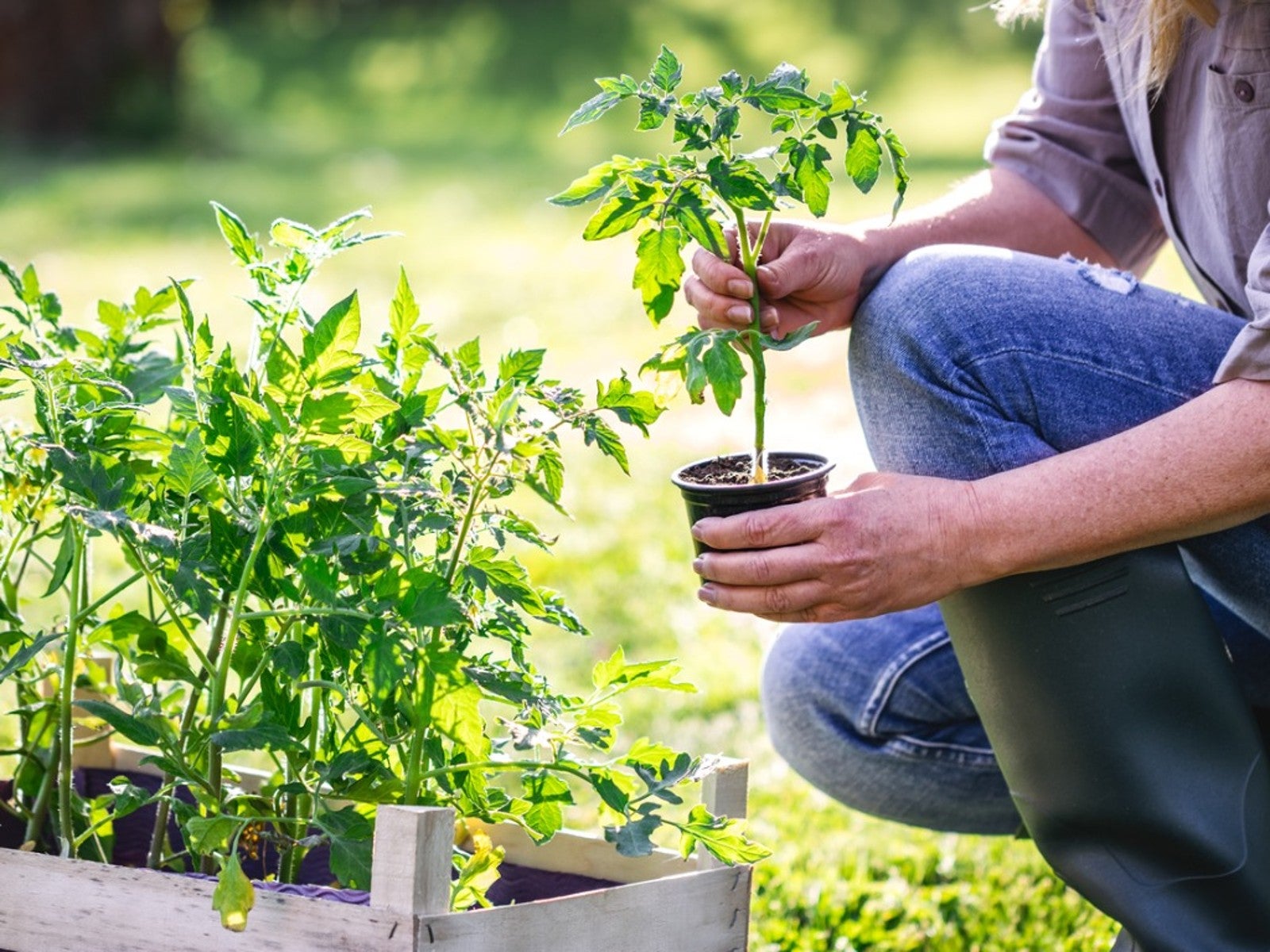How To Transplant Tomato Plants


It seems every gardener has their own secrets for growing tomatoes. But when it comes to transplanting tomato seedlings into the garden, there are a few basic do's and don'ts. Following these practices will ensure your tomato plants get off to a good start.
Do Choose Healthy Tomato Plants
Whether you start your own plants or purchase seedlings, the health of the tomato plants has a big impact on their future success. Tomato seedlings should have a bright green color, a hardy stem to support the plant, and be free of pests.
Unless the tomato seedlings will soon be transplanted into the garden, it's advisable to repot any plants which are root bound or have become leggy. Do this two to four weeks prior to planting in the garden. When repotting tomato seedlings, choose a well-draining potting soil and a 4 to 6 inch (10-15 cm.) deep container.
Don't Plant Too Early
Tomatoes are a warm season crop and do best when day and night temperatures range between 60 and 80 degrees F. (15-27 C.). When to transplant tomato seedlings into the garden will vary depending upon your climate and growing zone. In general, hold off transplanting seedlings until after the last frost date and when soil temperatures reach 60 degrees F.
Tomato plants started in a protected environment like a greenhouse or inside your home will require a 7 to 10 day period of hardening off prior to transplanting into the garden. This process acclimates the young plants to increased periods of direct sunlight and wind each day.
How to Transplant Tomato Plants
Once the tomato seedlings are ready to transplant into the garden, choose a sunny location with good drainage. If needed, amend the soil with organic material and space the seedlings 2 to 3 feet (.6-.9 m.) apart to give the plants adequate room to mature.
Here are additional dos and don'ts for transplanting tomato plants into the garden:
Gardening tips, videos, info and more delivered right to your inbox!
Sign up for the Gardening Know How newsletter today and receive a free copy of our e-book "How to Grow Delicious Tomatoes".
- Don't plant in hot, sunny weather. Your seedlings will adjust to their new home much better if you plant when it's cool, cloudy, or in the evening.
- Do water tomato seedlings thoroughly before transplanting them into the garden.
- Don't grab the seedling by the stem when removing it from the pot. This crushes the protective hair-like fuzz or trichomes on the stem. Instead, remove the seedling by pushing up from the bottom of the pot.
- Do plant tomato seedlings deep by burying the bottom two-thirds of the plant. Tomatoes will send out roots from the buried part of the stem and this will increase the plant's vigor.
- Don't leave weak-stemmed or leggy tomatoes lying on the ground. Instead, plant them horizontally so only the top sets of leaves remain above ground.
- Do thoroughly water seedlings after transplanting them, and again every few days until they become established.
- Don't wait too long to set up a support system. Within days of transplanting tomatoes into the garden, drive wooden stakes into the ground 4 to 6 inches (10-15 cm.) away from each plant, or insert tomato cages.
- Do fertilize your newly-planted tomato seedlings. This helps them get off to a good start.

Laura Miller has been gardening all her life. Holding a degree in Biology, Nutrition, and Agriculture, Laura's area of expertise is vegetables, herbs, and all things edible. She lives in Ohio.
-
 Looking For Plants To Give You The Soft And Fuzzies? Try These 5 Fuzzy Leaf Plant Options
Looking For Plants To Give You The Soft And Fuzzies? Try These 5 Fuzzy Leaf Plant OptionsLovers of texture, drama, silver foliage and tactile plants will adore these special sensory garden additions. These fuzzy leaf plant options will leave you all aglow
By Susan Albert
-
 Get Ready For A Summer Of Hummers! Grow These Full Sun Hummingbird Plants and Flowers
Get Ready For A Summer Of Hummers! Grow These Full Sun Hummingbird Plants and FlowersIf you’re lucky enough to enjoy a sunny backyard, make sure you are maxing out on your pollinator opportunities and grow these full sun hummingbird plants and flowers
By Tonya Barnett